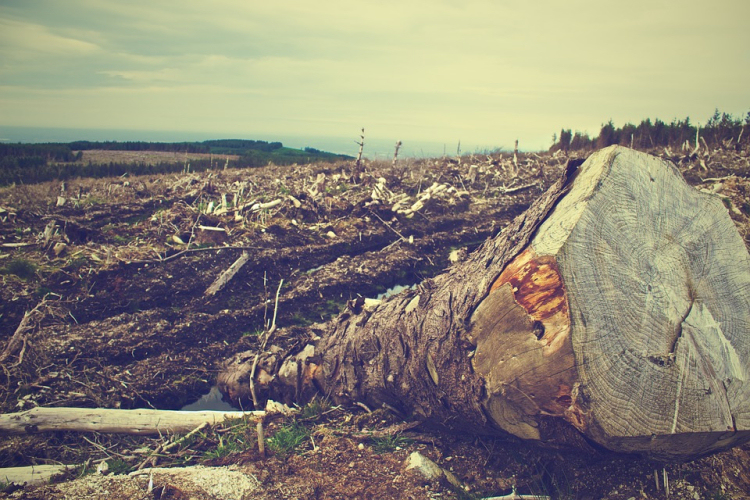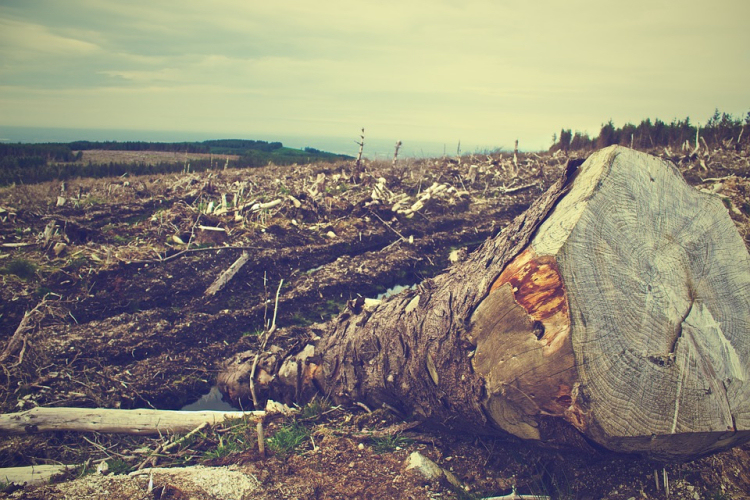
ITHACA, N.Y. – When it comes to tackling climate change, the focus often falls on reducing the use of fossil fuels and developing sustainable energy sources. But a new Cornell University study shows that deforestation and subsequent use of lands for agriculture or pasture, especially in tropical regions, contribute more to climate change than previously thought.
The new paper, “Are the Impacts of Land Use on Warming Underestimated in Climate Policy?” published in Environmental Research Letters, also shows just how significantly that impact has been underestimated. Even if all fossil fuel emissions are eliminated, if current tropical deforestation rates hold steady through 2100, there will still be a 1.5 degree increase in global warming.
“A lot of the emphasis of climate policy is on converting to sustainable energy from fossil fuels,” said Natalie M. Mahowald, the paper’s lead author and faculty director of environment for the Atkinson Center for a Sustainable Future. “It’s an incredibly important step to take, but, ironically, particulates released from the burning of fossil fuels – which are severely detrimental to human health – have a cooling effect on the climate. Removing those particulates actually makes it harder to reach the lower temperatures laid out in the Paris agreement.”
She said that in addition to phasing out fossil fuels, scientific and policymaking communities must pay attention to changes in land use to stem global warming, as deforestation effects are “not negligible.”
While the carbon dioxide collected by trees and plants is released during the cutting and burning of deforestation, other greenhouse gases – specifically nitrous oxide and methane – are released after natural lands have been converted to agricultural and other human usage. The gases compound the effect of the carbon dioxide’s ability to trap the sun’s energy within the atmosphere, contributing to radiative forcing – energy absorbed by the Earth versus energy radiated off – and a warmer climate.
As a result, while only 20 percent of the rise in carbon dioxide caused by human activity originates from land use and land-cover change, that warming proportion from land use (compared with other human activities) increases to 40 percent once co-emissions like nitrous oxide and methane are factored in.
“In the short term, the land use tends to have twice the radiative forcing as it should have had from the carbon dioxide because of the co-emissions, so it’s twice as important,” said Mahowald.
Mahowald’s finding resonates with a previous paper she published in Global Biogeochemical Cycles in January, “Interactions Between Land Use Change and Carbon Cycle Feedbacks,” which showed that the carbon released by a deforested area is actually doubled over time because that area’s future potential to function as a natural sink – i.e., a habitat that can absorb carbon dioxide from the atmosphere – has been eliminated.
“Normally people only think about what’s happening right now when they think about the carbon budget,” Mahowald said. “But if you think about what’s going to happen over the lifetime of that land, long into the future, you should multiply that land conversion by two to understand the net effect of it.”
As agriculture expands in tropical areas and the pressures to turn forest into croplands increase, Mahowald stresses the importance of using extended timelines to assess the impact these practices have on the climate.
“We have a nice phrase: multi-centennial legacy of current land-use decisions,” she said. “When we think about climate change, we can’t stop at the end of the century. The consequences keep going for a couple more centuries.”
###
For more information: Lindsey Hadlock office: 607-255-6121 cell: 607-269-6911 [email protected]” target=”_blank” rel=”noopener noreferrer”>[email protected]
Cornell University has television, ISDN and dedicated Skype/Google+ Hangout studios available for media interviews. For additional information, see this Cornell Chronicle story.
Media Contact
Lindsey Hadlock
[email protected]
607-255-6121
@cornell
http://pressoffice.cornell.edu
http://blogs.cornell.edu/mediarelations/2017/09/05/4965/
Related Journal Article
http://dx.doi.org/10.1088/1748-9326/aa836d





